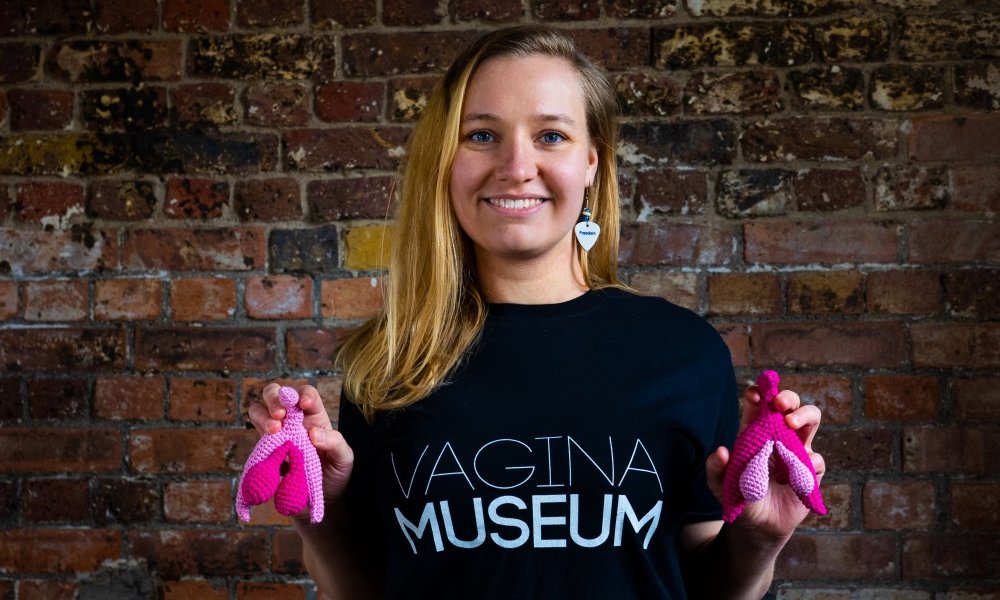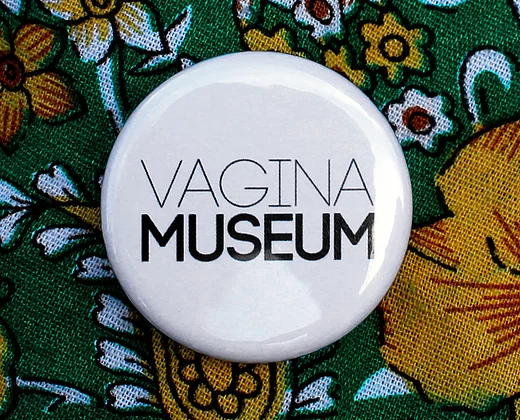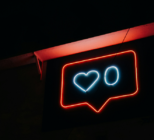Building a brand is a museum’s chance to sculpt and dictate its own identity; enabling cultural institutions to shun certain stereotypes or assumptions about their offering. Branding should immediately communicate to a potential visitor whether the museum in question is their kind of place.
Certain exhibits do, however, become stronger identifiers of a museum’s identity than its branding – whether the institutions like it or not. If audiences instantly associate a huge whale skeleton with the Natural History Museum or da Vinci’s Mona Lisa with the Louvre, it’s hard to imagine anything evoking thoughts of the Vagina Museum more so than, well, a vagina.

The challenge of building a brand to complement rather than reinforce such a stark assumption has fallen to Florence Schechter, founder and director of the Vagina Museum.
A sensitive area
Rebranding is always an arduous process, and it’s been not been made any easier for Schechter as she has had to split her time between this and all the other tasks necessary to open a museum in one of the world’s most expensive cities.
While not asserting that this is always the case for smaller museums with a niche focus, Schechter believes that for the Vagina Museum it is harder to build a brand than for an institution with a more mainstream focus. The museum’s name also doesn’t leave much to the imagination, so a slightly more nuanced approach to branding is essential.
“There are so many connotations and so much stigma; it’s a minefield navigating all of that. It’s such a sensitive topic. Make one slip up and it could really hurt people,” Schechter told Advisor.
As such, imagery has proven a major factor in decision making; something which may not be such a concern for other venues. “We couldn’t really use an image of a vulva in our branding or it will make advertising really difficult for us,” she explained.

In this aspect the Vagina Museum is taking a very different approach to that of The Icelandic Phallological Museum, another institution with similar considerations to make while building a brand. The Scandinavian museum has, unlike its British counterpart, chosen to put penises front and centre of its designs.

The alternative approach Schechter is taking makes perfect sense when considering that museums exploring the respective histories of the penis and vagina will almost certainly attract very different core visitors.
Positioning a brand and crafting a suitable tone of voice is a mind-bendingly tricky thing to perfect. The Vagina Museum has built a reputation and a following on social media due to its irreverent, tongue-in-cheek tweets and exchanges with other users. Whether the branding should mirror or counteract this was a defining choice throughout the process.
Paul Rand, the legendary art director and graphic designer behind the logos and identities of some of the world’s biggest companies, is after all quoted as saying “design is the silent ambassador of your brand”.

While more ‘traditional’ museums may well err on the side of subtlety, Vagina Museum pilgrims will in all likelihood not be attracted by a brand which plays it overly safe. As previously mentioned, however, Schechter was never considering courting controversy by plastering vaginas all over the branding; primarily to avoid transgressing any lines which may alienate some groups of potential visitors.
Nevertheless, when asked whether the decisions made in the branding process would be very different to more ‘stuffy’ museums, Schechter was unequivocal: “100%,” she exclaimed. “We have a very different core demographic to most museums. Predominantly we attract people in their twenties and thirties, mostly women, progressive and a higher proportion of LGBT.
“If our branding was like traditional museums,” she continued, “it would probably put them off. Our new branding is very modern, and more like an underground artist rebellion than a museum.”

Brief encounters
While liaising with Passport, the Leeds-based design agency selected to deliver the rebrand, Schechter’s recipe for success was being very specific, while guarding against stubbornness. Outlining the key criteria given to the design team, she explained the initial brief was seeking to combine “modern and non-traditional” with “bold and unapologetic,” befitting the museum’s general outlook – and crucially that of its primary audience.
Also, purely in terms of practicality, the ease with which designs can be used and manipulated were vital factors to weigh up; particularly when so much marketing is now done on ever-evolving social media platforms.
The cohesiveness a new design will deliver is an element the Vagina Museum founder is very excited about. “Until this point it’s just been me figuring it as I go along, so it will be nice to have a toolkit so that everything we publish and make fits together,” she noted.
Colour scheme, too, has proven a difficult balance to strike. Pinks and purples for instance, Schechter believes, have been used to death in the Vagina Museum’s area of the market. Connotations of red, green or yellow weren’t what the museum would like associated with it either. “We ended up going with no colour scheme!” Schechter added. Instead, the term “vibrant” was agreed upon as what any colour used must adhere to.

As Schechter busily prepares for the museum’s launch, it is clear that the Vagina Museum will have left no stone unturned in its pursuit of perfecting its branding.
Whether or not people like the redesign will remain to be seen. If it proves divisive then the argument could easily be made that it has succeeded in landing entirely on brand. Vaginas are, after all, not everyone’s cup of tea.
Editor’s note: The new Vagina Museum branding will be revealed imminently. Keep your eyes on the Advisor website and Twitter to see it first.










